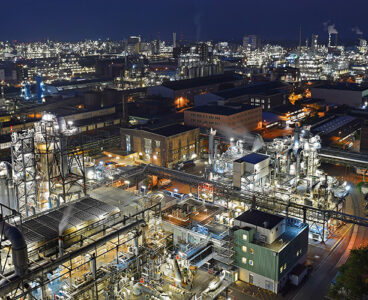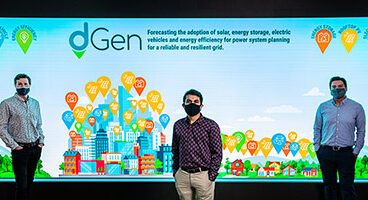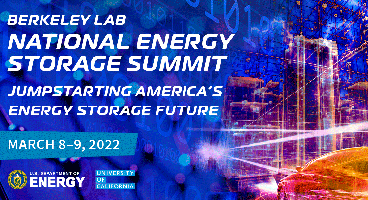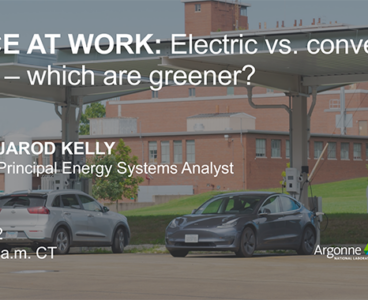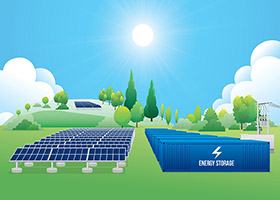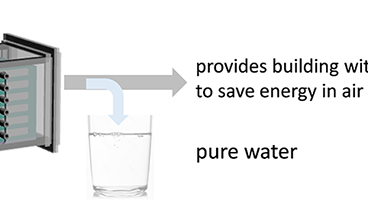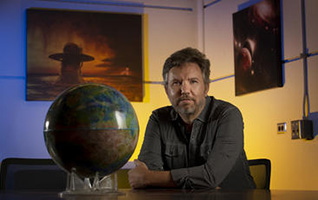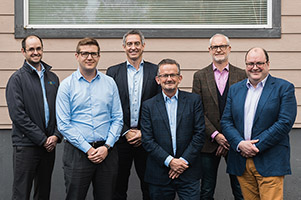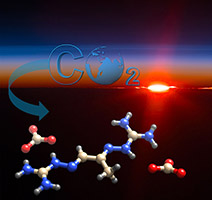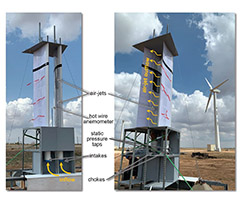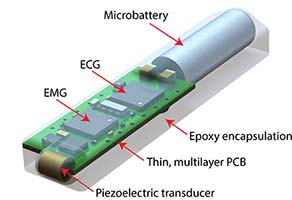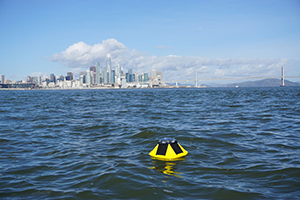By Mark Jones Last month, I got caught up in the Olympic mixed doubles curling. At the start of the competition, I think it is safe to say no one guessed a team would go undefeated on the way to a gold medal. The gold-medal winning Italians were young and from a country with very…
Greener chemistry, better planet
By Becky Chambers Hennessy, contributing writer If you haven’t heard the drumbeat from the American Chemical Society (ACS), April 17 marks the start of 2022 Chemists Celebrate Earth Week, designed to promote “the positive role that chemistry plays in the world.” But as important as that role is, let’s face it: “Chemistry” has an…
R&D 100 winner of the day: RE-Metal
Recycling rare earth elements from high-tech devices typically involves a toxic process that’s banned in many countries, including the United States. Researchers at Idaho National Laboratory have developed a new environmentally friendly process known as RE-Metal that enables the recovery of rare earth metals from waste electronics and other sources. RE-Metal helps solve an enormous…
US Dept. of Energy funds Rensselaer’s development of technologies to reduce nuclear waste and advance clean energy
Rensselaer Polytechnic Institute has been awarded $607,505 from the U.S. Department of Energy Advanced Research Projects Agency – Energy (ARPA-E) to help develop technologies to resolve the waste and storage challenges associated with Advanced Nuclear Reactor fuel cycles. The project is funded through ARPA-E’s “Optimizing Nuclear Waste and Advanced Reactor Disposal Systems” (ONWARDS) program, which…
R&D 100 winner of the day: dGen
National Renewable Energy Laboratory’s dGen is an open-source software that simulates customer adoption of distributed energy resources (DERs) through 2050. dGen is used by government and grid planning organizations to predict future energy systems at high spatial resolution and under diverse scenarios. It is an engine for equitably and cost-effectively integrating more DERs. The opensource…
The chemical cost of salting our roads
By Mark Jones We are addicted. We know it is bad, but we can’t stop. It rusts our cars, destroys our bridges, damages our plants, yet, when it snows, we throw the salt. Ten inches of snow debilitated the Washington area in early January, closing a section of I-95. Snow closed roads, both in the…
National Energy Storage Summit to jumpstart America’s energy storage future
On March 8 and 9, Lawrence Berkeley National Laboratory (Berkeley Lab) is hosting the National Energy Storage Summit, a virtual public event that will connect thought leaders across industry, government, communities, and the research enterprise to catalyze partnerships and accelerate solutions around specific challenges to America’s energy storage future. Exponential energy storage deployment is both…
Driving sustainability through more eco-friendly laboratory equipment choices
By Adam Carter, Global Products Manager, Thermo Fisher Scientific Working in a laboratory, you cannot help but notice the amount of waste material and energy use that comes from experiments. From the frequent use of single-use plastics and a reliance on transnational shipping of reagents, to the dependency on high-energy-consumption equipment like -80° C freezers…
Science at Work: Electric vs. conventional Vehicles – which are greener?
by Argonne National Laboratory Join Argonne experts as they explore the best ways to measure greenhouse gas emissions Wednesday, March 2, 2022, 12:00 PM – 12:15 PM EST Are electric vehicles (EVs) really better for the environment than conventional ones? With 30 EV models to be introduced this year, many are asking this same question.…
The U.S. Department of Energy looking to fund solar technologies
The U.S. Department of Energy (DOE) Solar Energy Technologies Office (SETO) announced the Concentrating Solar-Thermal Power (CSP) Fiscal Year 2022 Research, Development, and Demonstration funding program, which will award up to $25 million for innovative research and development projects in CSP technologies. These projects will accelerate the large-scale development and deployment of solar technologies. CSP technologies offer value as renewable energy resources that can…
R&D 100 winner of the day: Ubiquitous Water Wand (UWAW)
Ubiquitous Water Wand (UWAW), developed by Industrial Technology Research Institute (ITRI) and Chyi Ding Technologies, is an ultrahigh efficiency vapor/air separation equipment which extracts clean water from the air we breathe. It provides ultra clean drinking water without water sources, cooling media or water filters. In conjunction with an air-conditioner, UWAW can also provide buildings…
R&D increasing in new fields despite rising inflation, in this week’s R&D Power Index
The R&D World Index (RDWI) for the week ending January 14, 2022, closed at 5,520.70 for the 25 companies in the RDWI. The Index was up 0.89% (or 48.45 basis points) from the week ending January 7, 2022. The stock of 18 RDWI members gained value from 0.03% (Facebook) to 5.11% (Toyota Motor). The stock…
UC Riverside astrophysicist on Webb: Will it save future Earth?
By Jules Bernstein The James Webb Space Telescope, the most complex and expensive space laboratory ever created, is less than two weeks away from its ultimate destination a million miles from Earth. Once it arrives, it will send information about parts of space and time never seen before. It will also send previously unattainable information…
An ‘Organic’ movement for materials
By Markus Buehler, McAfee Professor of Engineering at MIT When we talk about advances in materials science, the focus is typically on the materials themselves: how strong we can make this fabric, how light we can make the construction materials, how cheap we can manufacture better products than we have now. But the benefits of…
ABB seeks partners to join energy efficiency movement
Last month, ABB hosted an exclusive virtual roundtable discussion to give members of the media an opportunity to learn more and ask questions about the energy efficiency movement being championed by the company. The event explored the practical benefits and data of integrating high-efficiency solutions into existing industrial and commercial infrastructure to affordably and immediately…
Top-10 areas of amazing science at Brookhaven Lab in 2021
By Karen McNulty Walsh and Stephanie Kossman, Brookhaven National Laboratory Research at the U.S. Department of Energy’s (DOE) Brookhaven National Laboratory spans scales from the cosmic to subatomic, advancing our understanding of the world around and within us. Looking for discoveries that spark transformational technologies? Brookhaven has those, too! Here’s the 2021 recap of important…
Today’s recirculating chillers help labs go green
By Greg Ducharme, Product Director Laird Thermal Systems There are several factors to keep in mind when operating and managing modern laboratories: efficiency, cost management and future-proofing. Green labs provide the blueprint for equipment optimization and environmental compliance, which in turn minimize energy consumption, lower operating costs and set labs up for continued success. Thermal…
LiTAS lithium extraction pilot plant deployed to world’s largest lithium resource
EnergyX has successfully deployed the first of three LiTAS pilot plants, a containerized direct lithium extraction (DLE) unit, for operation at Bolivia’s Salar de Uyuni, the largest lithium resource in the world. EnergyX first licensed its core technology from the University of Texas in May 2019, and only two years later has amassed a team…
Transport and its role in the circular economy
Guest editorial from Permali, a material solutions company specializing in manufacture, design and qualification of composite and PU material solutions for the defense, aerospace, health, rail, automotive and many other engineering sectors that require compliance with complex regulatory frameworks. There is growing importance in the ways industries implement circular economy models at scale, not only…
Mitsubishi Chemical and Agilyx collaborate on successful advanced recycling trial
Mitsubishi Chemical Methacrylates and partner, Agilyx Corporation, a wholly owned subsidiary of Agilyx AS and a pioneer in the chemical recycling of post-use plastics, announced the successful results of a full-scale production trial for polymethyl methacrylate (PMMA; commonly called acrylic) depolymerization at Agilyx’s facility in Tigard, Oregon. The full-scale trial, conducted in August 2021, returned…
R&D 100 winner of the day: BIG NET
BIG NET, developed by Oak Ridge National Laboratory, ReactWell and Holocene Climate Corp., is a negative emission technology (NET) that captures carbon dioxide out of the atmosphere through direct air capture. The technology involves a new class of absorbents called bis-imino-guanidines (BIGs) that absorb CO2 from air into aqueous solutions and convert it into crystalline…
R&D 100 winner of the day: AeroMINE
AeroMINE (Motionless INtegrated Extraction), from Sandia National Laboratories, stationary wind harvesters provide safe, scalable, distributed electricity generation with no external moving parts. They easily integrate with buildings or operate stand-alone. They can complement rooftop solar providing safe, affordable and reliable power to warehouses, box stores, commercial buildings, military bases and remote locations, massively reducing greenhouse…
R&D 100 winner of the day: Lab-on-a-Fish
Pacific Northwest National Laboratory’s Lab-on-a-Fish is a wireless, miniaturized underwater technology system that provides real-time monitoring of fish and small aquatic species in marine, freshwater and estuarine habitats. The PNNL technology is the first in the world to combine edge computing with wireless acoustic sensing to assess animal behavior (acceleration and gyration); physiology (electrocardiogram and…
Baker-Polito administration awards $700K for new UMass Dartmouth biodegradable plastics lab
Lt. Governor Karyn Polito and executives from UMass Dartmouth celebrated the announcement of a new $739,936 award from the Commonwealth of Massachusetts to support the development of a new research and development laboratory in New Bedford to study biodegradable and ocean-safe plastics. The new Plastics Biodegradation Laboratory at UMass Dartmouth will enable efficient testing of…
Sofar Ocean secures $39M to drive climate mitigation and adaptation
Sofar Ocean, an ocean intelligence platform, announced it has secured a $39 million Series B syndicate round with Union Square Ventures (USV) and the Foundry Group. With this funding, Sofar will further scale its technology platform and grow its team across key regions worldwide. The funding will help the team in its mission of delivering…


